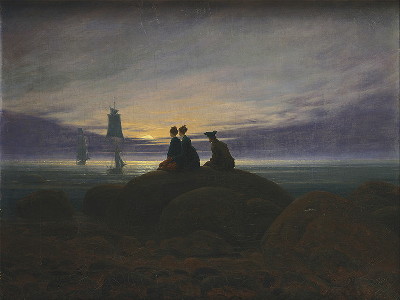What is 'pain'? From the perspective of neurology

by Finizio
It is "pain" that everyone feels, but that mechanism is not scientifically understood. Being a type of perception is definitely trying to elucidate pain which is a kind of pain, such as phenomena occurring in the brain by neuroscientists.
The Neuroscience of Pain | The New Yorker
https://www.newyorker.com/magazine/2018/07/02/the-neuroscience-of-pain
"Pain" is a physiological process as well as respiration and digestion, but it is too "subjective" and it is difficult to accurately convey the content to other people. The difficulty in dealing with "pain" is not only the person who feels pain but also the medical professional. Being unable to understand exactly the pain explained by the patient also leads to the difficulty of treatment and has a frustrating feeling.
Attempts to quantify pain have been done since long ago. Marc Isère, a French doctor in the 19th century, tried to evaluate the degree of pain from the rhythm of shouts due to pain. A researcher at Cornell University in the 1940s introduced a pain unit "Dol" but did not become established, but in 2017 researchers at MIT quantified the pain from facial expression distorted by pain " DeepFaceLIFT " algorithm We are developing challenging quantification.
Among various quantification methods of pain, the most widely used thing is to rely on a subjective report of a person who complains pain. A Canadian psychologist Ronald Mersac in the 1960's is still impressed by the abundance of emotional expressions for pain in 70's women suffering from phantom limb pain, about 80 vocabulary lists still check the pain It is used for questionnaire. In addition, the method of letting the given pain numerically expressed, invented by Kenneth Kale of the UK heart disease researcher in 1948, is still used now. Quantification of the pain that many scientists have tried so far, yet no one has been completely successful.

by winnifredxoxo
Dr. Eileen Tracy, Oxford University, who is researching in the field of neurology, is one of the researchers at the forefront of research fields to elucidate pain. Dr. Tracy is trying to elucidate the mechanism of pain as neuroscience by observing the brain waves when pain is given to the subject with fMRI. "Basic perception of touch, taste, vision, olfaction, hearing, etc. arrives in a specific area of the brain, but it is unknown how the brain constructs pain, everyone certainly knows Pains can be "painful" as being completely unknown, "as Dr. Tracy said, there is no clear way to understand pain from the brain and nerves.
In 1998, Dr. Tracy made experiments on brain analysis on pain for ice hockey players. In this experiment, the correlation was given to the intensity and the light of the heat by adding the heat to the hand while lighting the red, green and blue lights in front of the subject. Subjects who understood understanding that unpleasant pain near the burn would be given by the lighting of specific lights while proceeding the experiment could be "able to" anticipate the pain. Examining the state of the brain at the time when the subject responds that "pain comes" despite the fact that pain is not actually given, it can be confirmed that the blood flow to a specific area such as the prefrontal cortex is increasing It was. It seems that it is understood that the experience of pain can be partially created as "expectation" rather than actual feeling.

The fact that pain is related to spiritual elements is well known as a general theory. For example, it is a good example to alleviate the pain sensation by telling a doctor "to finish when counting 10" to children who are afraid of pain due to pain and diverting attention.
Dr. Tracy also has an interesting experiment to show that pain is related to the mental state. To confirm the empirical rule of "religious faith relieves pain", ask each group gathered devout Catholics and atheists to show paintings while giving pain and quantifying the pain It was. Then, when showing the secular paintings of Leonardo da Vinci, both groups showed the same reaction, but when I showed Sasso Ferrat's "Sacred Ferrat of our Lady" whose Virgin Mary was drawn It seems that the pain score of the Catholic group declined.

In addition, Dr. Tracy believes that there are different kinds of pain of "good pain" and "bad pain". In general, pain is thought to have a role as a signal to predict risk by noting the abnormality that occurred in the body. According to Dr. David Bennett who studies patients who do not feel pain due to unusual genetic mutation, these patients chewed their own tongue, scratched their ears, became hearing loss without noticing ear infections, As a result of touching hot things unconsciously, it is said that they often lose their lives young. Pain that causes unpleasant emotions means that it is meaningful as "good pain" in that it reduces the risk of injury to the body in the future.
In contrast, what is called "chronic pain" is positioned as "bad pain." Chronic pain is classified as "pain" but when you tell Dr. Tracy, it is not a "symptom" of pain, but rather should be classified as "disease". The chronic pain that has been thought to be on the "normal" extension of the pain so far is gradually becoming known from the detailed image data of the brain using MRI as a completely different problem is.
Some patients suffering from chronic pain are suffering from symptoms that emotions of emotions do not occur. This is thought to be caused by the change in the form of the brain's compensation system. Philosopher Jeremy · Bentham's words "Nature has put humanity under the rule of two rulers" pain "and" pleasure ", but while researching on pain, Dr. Tracy saw pain It seems that pleasure seems to be in a relationship like the back of the coin.
Related Posts:
in Science, Posted by darkhorse_log







